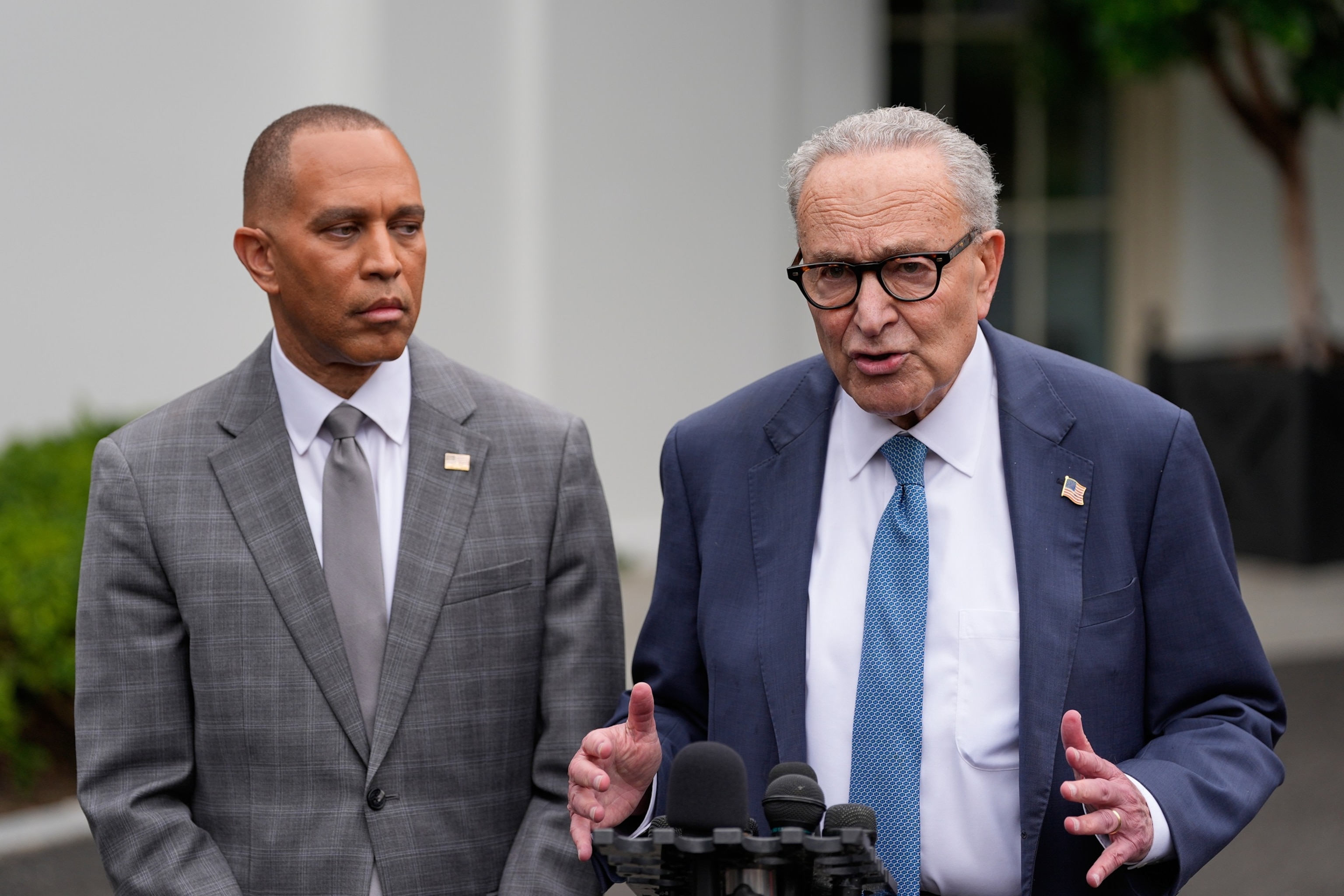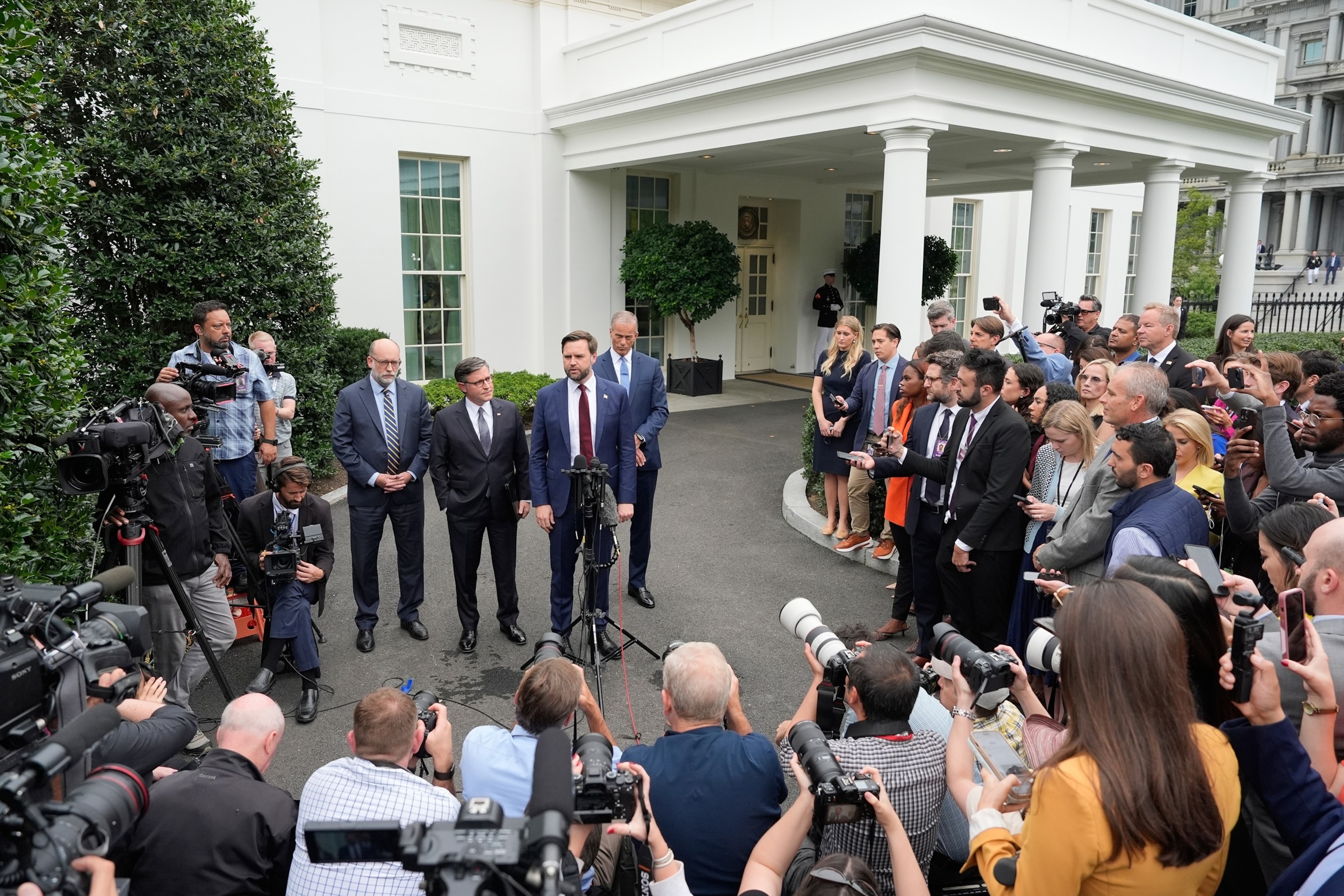The first day of the 2013 government closure, Senator Chuck Schumer, D-New York, had a message for Republicans who refused to finance the Government unless Congress missed Obamacare: the hostage taking would not work.
“As we said a thousand times, we are happy to discuss how to finance the government, but not with a gun to our heads,” Schumer said on the Senate’s floor.
“You won’t make us give to extortion,” he continued. “You are not going to take, as hostages, millions of innocent Americans and get us to do something you want, and we don’t, and they don’t.
That closure ended after 16 days and the Republicans had little to show.

The leader of the minority of the Hakeem Jeffries representatives and the leader of the Senate minority, Chuck Schumer, speak with journalists outside the west wing of the White House, on September 29, 2025, in Washington.
AP Photo/Alex Brandon
Twelve years later, Schumer and the Democrats, now in the minority, are looking at another government closure, but could be their own creation.
In the Senate, Democrats are holding support to a measure to keep the government financed at the current levels unless Republicans extend subsidies that help some Americans pay medical attention through the law of affordable care, which will expire at the end of the year, among other demands.
It is a page outside the Pioneer Play Book for the Republican Party and Senator Ted Cruz, Republican of Texas, and is used repeatedly since 2013.
But for the first time, Democrats are about to oppose finance the government. Schumer and the Democratic leader of the House of Representatives, Hakeem Jeffries, left a White House meeting with President Donald Trump and the main Republican leaders without an agreement on the way to follow.
“I think we head to a closure because the Democrats will not do the right thing,” said Vice President JD Vance at the entrance of the White House after the meeting.
When Congress avoided a closure in March, Schumer and nine other Democrats voted with the Republicans to extend the funds until the end of the fiscal year.
At that time, he argued that a closure would empower the Trump administration and the Government Efficiency Department led by Elon Musk to continue radically reforming the federal government
“Under a closure, the Trump administration would have a wide authority to consider entire agencies, programs and non -essential personnel and the staff members are despised without promise that they would ever be recontracted,” Schumer wrote in the New York TimesExplaining your vote.
Now, the Senate minority leader has reversed, but denying that the pivot is due to political pressure, arguing that the agreement cut in spring has not prevented the Trump administration from expelling federal workers.
“We are listening to the American people who need help in medical care,” Schumer said on Sunday in “know the press.” “As for these mass layoffs, guess what? Simple response of a prayer, they are doing it anyway.”

Vice President JD Vance speaks with journalists outside the White House, on September 29, 2025, in Washington, as director of the Office of Management and Budget, Russell Vought, the speaker Mike Johnson and the leader of the majority of the Senate John Thune Listen.
Alex Brandon/AP
While the American public has put himself on the side of the Democrats in the past closures, it has been in fights in which the Republicans tried to extract changes in policies.
After the closure for the defundimency of Obamacare in 2013, 53% of the respondents to an ABC News/Washington Post blamed the Republicans for the closure, compared to the 29% that blamed the then President Barack Obama, and the 15% that blamed both sides equally.
After Trump led the Republicans to a useless closure to extract funds from the border wall of the Chamber led by the Democrats in January 2018, 48% of the respondents blamed the president and the Republicans for the closure, compared to the 28% who criticized the Democrats, according to a survey of ABC News/Washington Post.
With reversed roles, Democrats could be online to be blamed for a new closure. And the Republicans in charge of both cameras could force messaging votes that underline the opposition of the Democrats to finance the government and the services it provides.
But this may not be a typical financing struggle, given the threats of the Trump administration to use the closure to dismiss even more federal workers, and continuous efforts to block spending agreements already approved by Congress on political disputes.
Many Democratic voters have also pressed their leaders to face the Trump administration with more force, and a closure could be a place to do so, despite the potential impact on government services.
If the Congress cannot reach an agreement, and the government closes, it is not clear how long a dead point will last. Nor is it clear how long the voters will keep him against the leaders of Washington, more than one year after half of the periods of 2026.
But all eyes will be in Congress leaders who are now in unexpected roles.






